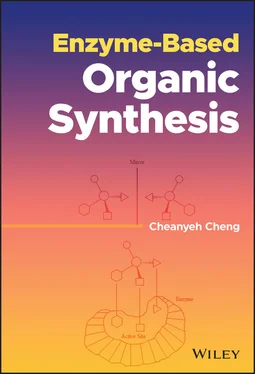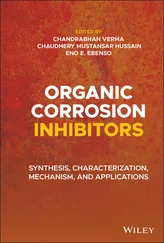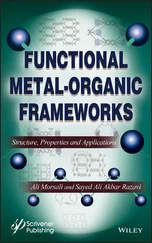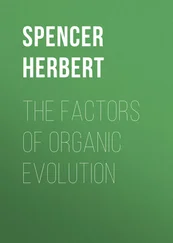Cheanyeh Cheng - Enzyme-Based Organic Synthesis
Здесь есть возможность читать онлайн «Cheanyeh Cheng - Enzyme-Based Organic Synthesis» — ознакомительный отрывок электронной книги совершенно бесплатно, а после прочтения отрывка купить полную версию. В некоторых случаях можно слушать аудио, скачать через торрент в формате fb2 и присутствует краткое содержание. Жанр: unrecognised, на английском языке. Описание произведения, (предисловие) а так же отзывы посетителей доступны на портале библиотеки ЛибКат.
- Название:Enzyme-Based Organic Synthesis
- Автор:
- Жанр:
- Год:неизвестен
- ISBN:нет данных
- Рейтинг книги:3 / 5. Голосов: 1
-
Избранное:Добавить в избранное
- Отзывы:
-
Ваша оценка:
- 60
- 1
- 2
- 3
- 4
- 5
Enzyme-Based Organic Synthesis: краткое содержание, описание и аннотация
Предлагаем к чтению аннотацию, описание, краткое содержание или предисловие (зависит от того, что написал сам автор книги «Enzyme-Based Organic Synthesis»). Если вы не нашли необходимую информацию о книге — напишите в комментариях, мы постараемся отыскать её.
An insightful exploration of an increasingly popular technique in organic chemistry Enzyme-Based Organic Synthesis
Enzyme-Based Organic Synthesis
Enzyme-Based Organic Synthesis
Enzyme-Based Organic Synthesis — читать онлайн ознакомительный отрывок
Ниже представлен текст книги, разбитый по страницам. Система сохранения места последней прочитанной страницы, позволяет с удобством читать онлайн бесплатно книгу «Enzyme-Based Organic Synthesis», без необходимости каждый раз заново искать на чём Вы остановились. Поставьте закладку, и сможете в любой момент перейти на страницу, на которой закончили чтение.
Интервал:
Закладка:
The difference between enzyme‐based organic synthesis and traditional organic synthesis is that it uses a highly selective biocatalyst (enzyme), and the enzyme selectivity includes reaction substrate specificity, stereospecificity, and regiospecificity. The selectivity of enzyme also makes the enzyme‐based organic synthesis, particularly the asymmetric synthesis, more easy, convenient, and efficient to produce specialty chemicals. Because the enzyme‐based reaction is usually performed in aqueous solution under mild conditions and in many cases using sustainable renewable substrates, which demonstrates environmentally friendly, enzyme‐based organic synthesis fulfils the requirements of green chemistry. The development of enzymatic biotransformation or microbial fermentation has been over 50 years and has been implemented in numerous industrial applications. The recent advances in enzyme technology, such as protein engineering, site‐specific evolution, metabolic engineering, and enzyme immobilization, have made enzyme‐based organic synthesis more and more competitive with organic synthesis derived from fossil fuels.
This book contains eight chapters. Chapter 1is an introduction to enzyme, coenzyme, enzyme specificity, and the green chemistry. Chapter 2is about organic syntheses and their applications using class I oxidoreductases. Chapter 3focuses on the transamination, glycosyl‐transfer, phosphorylation, and acetyl‐group transfer reactions using class II transferases and their applications. Chapter 4is about class III hydrolases‐based organic syntheses including hydrolysis reactions of ester bond, amide bond, phosphate esters, epoxides, hydantoins, glycosidic bonds with natural polysaccharides, and their applications. Chapter 5contains organic syntheses and applications using class IV lyases and concentrates on carbon‐carbon bond formation, carbon‐oxygen bond formation, carbon‐nitrogen bond formation, carbon‐sulfur bond formation, and carbon‐halide bond formation. Chapter 6describes organic syntheses using class V isomerases including racemases and epimerases, cis – trans isomerase, intramolecular oxidoreductases, intramolecular transferases, intramolecular lyases, and their applications. Chapter 7presents class VI ligases‐based organic syntheses and their applications focusing on carbon‐oxygen bond formation, carbon‐sulfur bond formation, carbon‐nitrogen bond formation, and carbon‐carbon bond formation reactions. The final Chapter 8shows two major techniques that could assist the advancements of enzyme‐based organic syntheses in the future: one is the combinatorial chemistry and the other is artificial intelligence.
The level of contents of this book is medium to high suitable for readers having some basic knowledge of chemistry, organic chemistry, biochemistry, biology, microbiology, and chemical engineering. This book would be a very good reference book for academic researchers and industrial experts working on research and development. This book could also be used as a textbook for one semester course in senior class or graduate school class. Finally, I hope that this book will be able to “throw a brick to attract jade” to elicit truly outstanding books by experts and scholars in this field.
Cheanyeh Cheng
Chungli, January 2021
Acknowledgements
I would like to thank my parents, Mr. Yet‐Sen Cheng and Mrs. Yen‐In Chen Cheng, for working hard to raise me and for providing me the necessary fees for higher education.
I would like to thank my former teachers and professors for the education they gave me and for inspiring me so that I continue in the academic field and have a good performance.
I would like to thank God for giving me the opportunity to write this book.
1 Introduction
1.1 Discovery and Nature of Enzyme
Although the historical discovery of enzyme can be sourced back to Spallanzani as early as in 1783 with his noting to the liquefied meat by gastric juice of hawks [1], the discovery of enzyme is in general ascribed to the first “isolation” of an enzyme by two chemists, Anselme Payen and Jean‐François Persoz, who worked at a sugar factory in Paris. In 1833, they obtained a substance from the malt extract called diastase (now known as amylase) that can hydrolyze starch to soluble sugar. Next year, Schwann succeeded in extracting the first enzyme from animal source, pepsin, which digests meat from stomach wall [2]. Later, he also identified trypsin, a peptidase in digestive fluids. By 1837, Jön Berzelius made a remarkable foresight for the catalytic nature of all these biological diastases. In the 1950s, Louis Pasteur acknowledged that sugar fermentation by yeast to produce alcohol is catalyzed by “ferments.” Then, in 1860, Berthelot obtained an alcohol precipitate from yeast that can convert sucrose to glucose and fructose and concluded that there was much such ferment in yeast. Not until 1878, the name enzyme , which means “in yeast,” was proposed by Frederick W. Kühne for these biological catalysts. The catalytic activity of enzyme was proved by Eduard Bücher in 1987 using yeast extract for catalytic alcohol fermentation. One year later, Duclaux proposed that all enzymes should give the suffix “ase” for an easily recognition [3].
The intensive studies of enzymes and proteins were both performed by biochemists in the 1800s. However, not until 1926 the protein nature of enzyme was seriously considered by biochemists that the jack bean urease that was recognized as a protein was first crystallized and recrystallized by James Sumner showing the catalytic ability for hydrolysis of urea to CO 2and NH 3[4, 5]. However, the crystal structure of urease which in essence is a nickel‐containing enzyme as known nowadays was obtained by Andrew Karplus from Klebsiella aerogenes [6, 7] almost 70 years later after Sumner’s work. Sumner’s conclusion was widely accepted in the 1930s, after John Northrop and Moses Kunitz crystallized pepsin, trypsin, and other digestive enzymes and found to be proteins. Due to the prosperous development of separation and purification technology and corresponding instrumentation, hundreds of enzymes had been purified and discovered in the middle of nineteenth century. Nevertheless, the sequencing of proteins and enzymes was not until the work of William H. Stein et al [8]. who first complete the sequence of ribonuclease A (an enzyme with only 124 amino acids) in 1960. Later, in 1972, William H. Stein and Stanford Moore shared the Nobel Prize in chemistry.
1.2 Enzyme Structure and Catalytic Function
1.2.1 Enzyme Structure
With the exception of a small group of catalytic RNA molecules, all enzymes are protein. The protein nature of enzyme has been elucidated about a century ago that has led fast and broad progress in chemistry, biochemistry, and biology, in addition, led the development of many new fields such as enzymology, bioorganic chemistry, and molecular biology. In order to understand enzyme and how its function as a catalyst, one must know the enzyme structure first. Since enzyme is a kind of protein, its structure follows the four‐level structure of protein, namely, the primary structure, the secondary structure, the tertiary structure, and the quaternary structure.
Protein is a polymer of amino acids that is referred to as peptides or proteins. Peptides are chains of amino acids joined through a substituted amide linkage, termed a peptide bond, which is formed by dehydration to remove the elements of water from the α‐carboxyl group of one amino acid and the α‐amino group of another. When a few amino acids (usually, less than 10) are joined in this fashion, the structure is called an oligopeptide. When many amino acids are joined, the product is called a polypeptide. Proteins that may have thousands of amino acid residues are polypeptides. Therefore, “protein” and “polypeptide” are sometimes used interchangeably. However, molecules with molecular weight below 10 000 are generally, referred to as polypeptides. In a peptide, the amino acid residue at one end with a free α‐amino group is the amino‐terminal (or N ‐terminal) residue, while at the other end, the residue with a free carboxyl group is the carboxyl‐terminal (C‐terminal) residue [9].
Читать дальшеИнтервал:
Закладка:
Похожие книги на «Enzyme-Based Organic Synthesis»
Представляем Вашему вниманию похожие книги на «Enzyme-Based Organic Synthesis» списком для выбора. Мы отобрали схожую по названию и смыслу литературу в надежде предоставить читателям больше вариантов отыскать новые, интересные, ещё непрочитанные произведения.
Обсуждение, отзывы о книге «Enzyme-Based Organic Synthesis» и просто собственные мнения читателей. Оставьте ваши комментарии, напишите, что Вы думаете о произведении, его смысле или главных героях. Укажите что конкретно понравилось, а что нет, и почему Вы так считаете.












